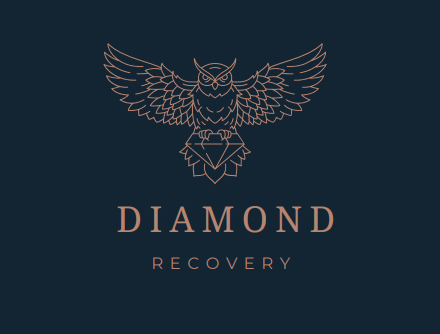Recovery is not the same for everyone; it’s deeply personal, shaped by unique struggles and challenges that can seem daunting, overwhelming, and even impossible at times. Whether it’s you taking those first brave steps or you’re standing beside a loved one in their fight for healing, understanding individualized treatment plans provides the truth about real and lasting recovery. It isn’t about fitting into someone else’s story; it’s about crafting a plan around the individual, their struggles, strengths, and unique spirit.
Individualized treatment plans in residential rehab centers provide a path designed just for you. These personalized roadmaps go beyond generic solutions, offering tailored care that adapts with a person through every challenge, milestone, or breakthrough along the way. By addressing each person’s specific needs physically, emotionally, and psychologically, individual treatment plans provide the best chance for a lasting transformation and comeback.
In this article, we will explain how rehab centers craft individualized treatment plans, why they matter, and how they evolve along the path to recovery to guide you, or someone dear to you, toward a brighter, stronger tomorrow filled with strength, hope, and sobriety.
What Are Individualized Treatment Plans?
Recovery is a personal process and needs to be addressed on an individual level to achieve the most success. Residential rehab centers offer a variety of services. Some include individualized treatment plans, which are customized strategies and plans to address an individual’s unique needs rather than implementing a generic approach.
We all know that just because something says “one size fits all” does not make it true. Standardized treatment plans can fall short by not addressing things like personal history, triggers, and strengths, decreasing the likelihood of long-term success.
Because each client is different, rehab facilities create individual treatment plans based on specific needs, priorities, and individual goals, utilizing both traditional therapeutic modalities and holistic approaches. A plan that celebrates and builds on individuality allows people to rediscover themselves, set personal goals, and experience success that is meaningful on a personal level. Recovery is not just about conforming; it’s about rediscovering oneself.
Why Individualized Treatment Plans Matter
Perhaps most importantly, individualized treatment plans offer a personalized approach to healing the whole person, not just the addiction. Each story is different, but we know that addiction does not come from thin air; there are different driving forces to addiction. Different backgrounds, addictions, traumas, and goals all require distinctly different approaches. Individualized treatment plans also allow for the treatment of co-occurring mental health conditions, making the healing experience more complete.
When treatment plans align with someone’s personal experience, participation and commitment to the plan increase, and lasting change is achieved. For example, focus on trauma may be planned for one person while another person may benefit more from a treatment plan geared towards co-occurring mental health conditions. Both get what they need with individualized treatment plans.
Evidence shows that personalized treatment plans are effective and make recovery more achievable for people (or their loved ones) when it is designed for them.
How Rehab Centers Craft Individualized Treatment Plans
The Starting Point
Residential rehab centers will start by doing an initial intake assessment and evaluation that may even begin before reaching the facility. Comprehensive evaluations are performed to get medical history, addiction history, mental health status, lifestyle, personal goals, and many other in-depth questions that may cover values, culture, hobbies, or work experience. This is a collaborative effort between the individual seeking help, sometimes their family, and the team of professionals (therapist, counselors, medical staff) at the rehab facility.
Factors Considered
Further interventions may be considered during and after assessment and evaluation, like detox, therapy (individual, group, family), or medication-assisted treatment if needed. Other key factors to consider when determining the best type of therapies are gender, occupation (emergency and first responders, police officers, military), and holistic therapies that can be incorporated into the client’s lifestyle.
At this point, creating realistic short-term and long-term goals is wise. This helps track progress, build self-esteem, and motivate as milestones are reached.
Designing the Plan
No two addiction experiences are the same, so, likewise, plans are uniquely tailored to each individual. After the evaluation, a plan can be designed to integrate these findings into a tailored mix of therapies and holistic practices. This plan will become the foundation of a person’s comeback story.
Implementing the Plan: Bringing It to Life
In settings like a residential rehab center in Salt Lake City, the plan is implemented with structure but remains flexible to adjust to the person as they receive daily support. Holistic therapies are incorporated into daily life for emotional, psychological, environmental, and social support and healing.
Implementing a client-focused, result-driven treatment plan takes a team effort. Rehab staff, peers, and sometimes family all play an important role in lifting up the individual in recovery.
Reinforcement that the plan is working is crucial to fuel motivation. For this reason, it is important to celebrate milestones, no matter how small.
Monitoring and Adjusting: A Living, Breathing Plan
Recovery is different for everyone, but one thing remains constant for all: it is not linear. Recovery is full of new challenges arising or breakthroughs made that require flexibility in the treatment plan. The individualized treatment plan grows with the person, ensuring it always fits.
With constant support and guidance, along with frequent and ongoing assessments, physical and emotional progress is tracked, and the plan is adjusted as needed. For example, if a new trigger emerges, therapy is adjusted. Or, as confidence increases for the person in recovery, the plan can be adjusted to promote independence in preparation for a life outside of rehab.
The way that an individualized plan changes as a person heals in recovery prepares that person for a life beyond rehab. This adaptability is what makes the comeback lasting.
In the end, crafting your comeback, or supporting a loved one’s, is about more than just overcoming addiction; it’s about reclaiming a life that’s uniquely yours. Individualized treatment plans in rehab centers offer a roadmap built from your story, shaped by your struggles, and lifted by your strengths. From the first brave steps of assessment to the ongoing adjustments that keep the plan alive, this personalized approach provides a mold for each individual. It is a path of rediscovery, resilience, and real, lasting change. Whether you’re the one healing or standing by a loved one, know this: An individualized treatment plan isn’t just a path to sobriety; it’s a promise of a brighter, stronger tomorrow, designed just for you.

















